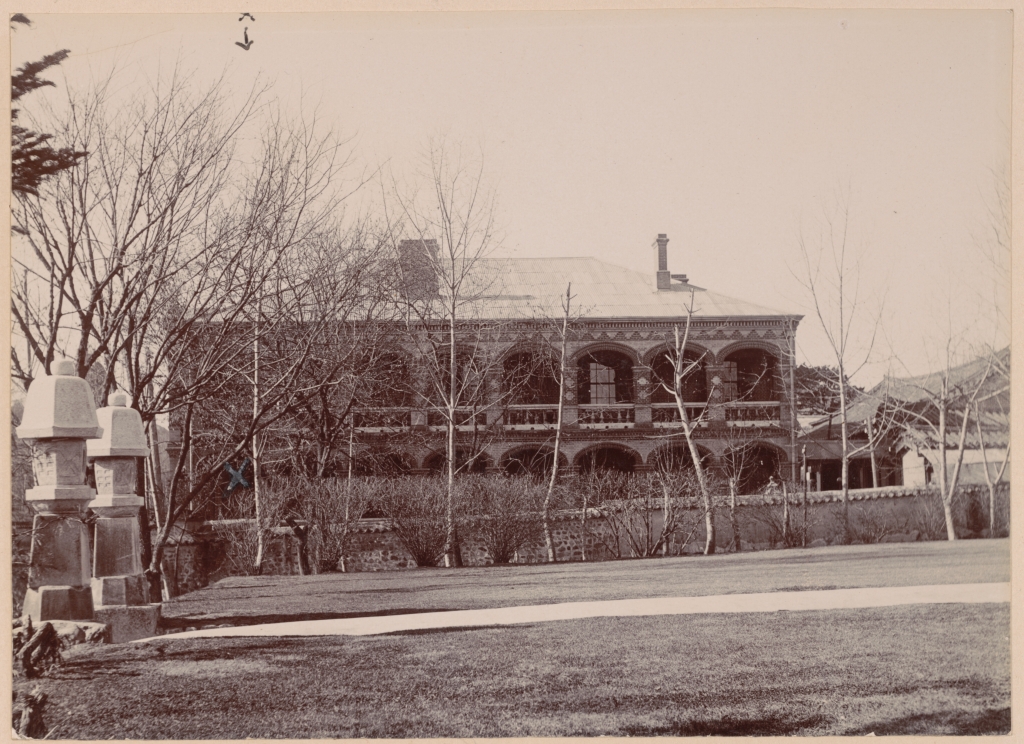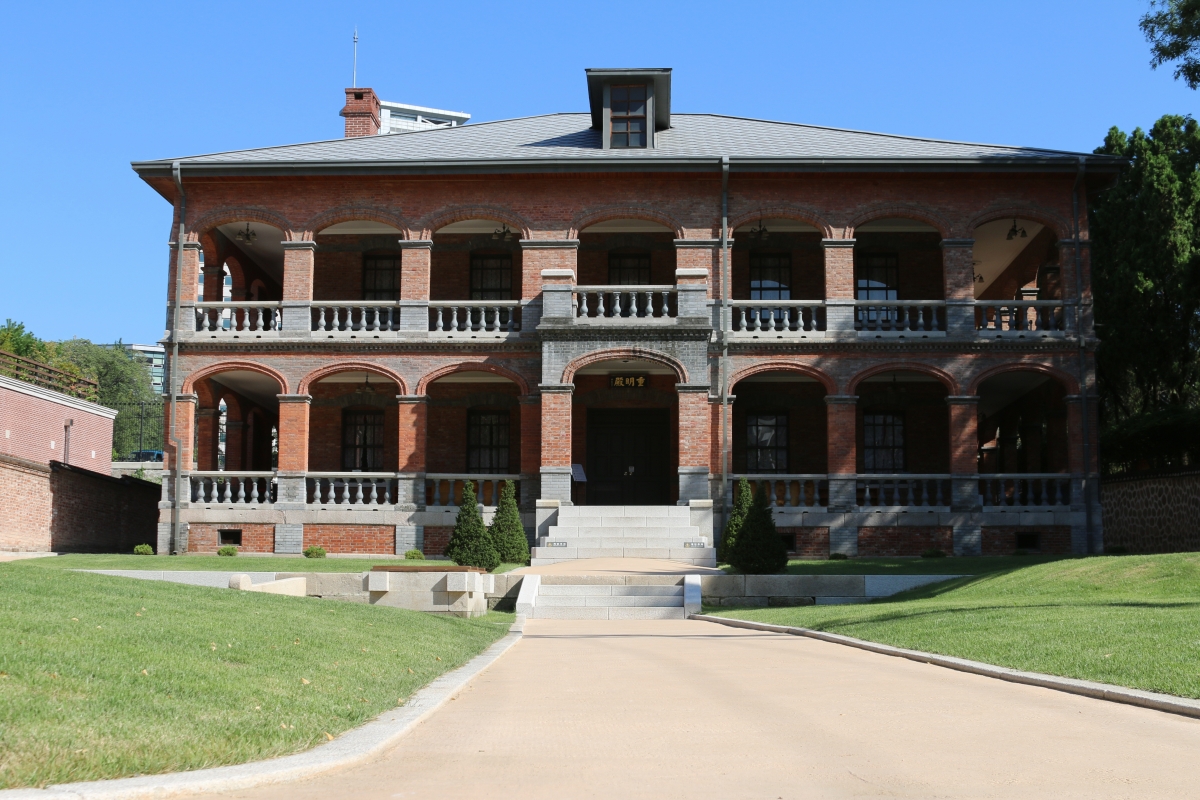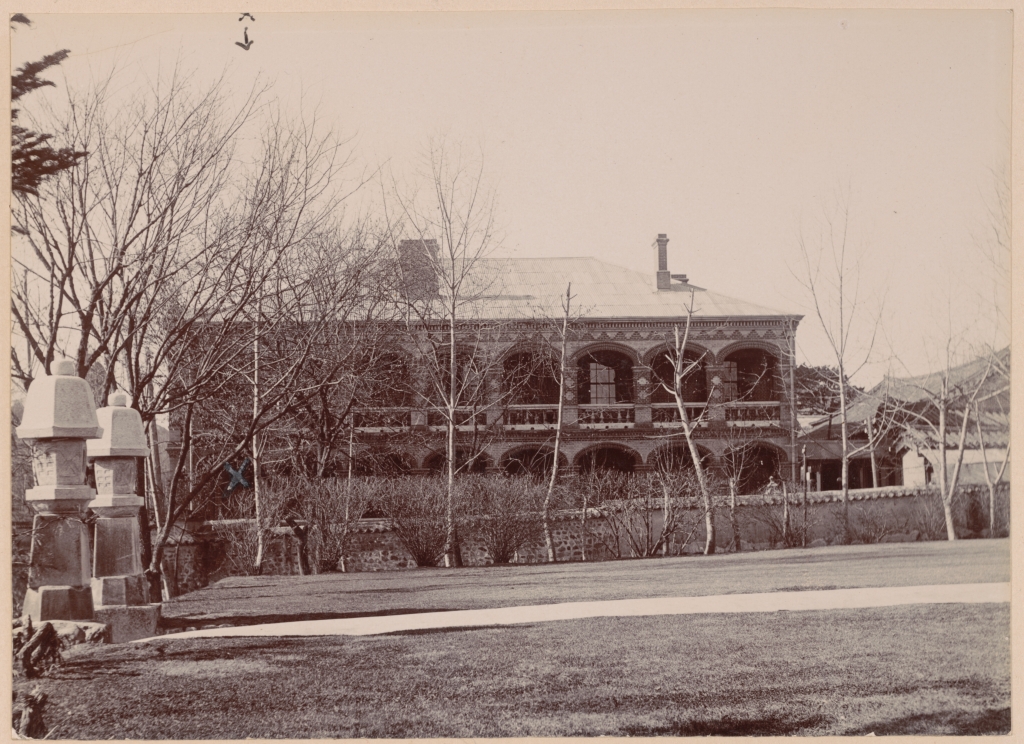Born in the Ukraine, Afanasy Ivanovich Seredin-Sabatin (hereinafter Sabatin) worked in modern Joseon and under the Korean Empire. He entered Incheon Chemulpo in 1883 when he was 23 years old, and worked mainly in Hanseong (Seoul) and Jemulpo. Before leaving the land due to the Russo-Japanese War in 1904, he participated in construction and civil engineering projects such as Dongnimmun, Russian Legation, and Jemulpo quay wall construction. He also crossed with a wide range of additional professions, including as Far East correspondent for a British newspaper and as a branch manager for Eastern China Sea-going Steamship Company (東淸海上汽船會社).
Architectural studies on him began in the 1990s. Kim Chungdong (professor emeritus, Mokwon University) points out that the modern architecture of Korea was influenced not only by Japan but also by various other forces, informing the academic community of Sabatin’s work in ‘Study on the Transition and Effect of Western Architecture in Korean Modern Architecture’ (1990). Kim Taejung (professor emeritus, Kyungnam University) traced his work and shed light on architectural practice with his study of Sabatin, ‘A Study on the Russian Architect Seredin-Sabatin, engaged by the Korean Government in the late 19th century’ (1996). Later, in 2009, Dr. Tatiana Simbirtseva and Svetlana Levoshko (professor, Saint-Petersburg State University of Architecture and Civil Engineering) published papers on Sabatin’s life and architectural activities. And yet, there are still questions raised in previous research have not been fully resolved.
Sabatin’s Movements Traced in Literature
The study of Sabatin, which will resume on the 30th anniversary of Korea-Russia diplomacy, will examine Russia’s influence in the formation of Korean modern architecture, verifying the remaining estimates. On November 15, 2019, the Cultural Heritage Administration hosted a symposium at the National Palace Museum, ‘A Study on the Relationship between Sabatin and the Architectural Influences of Sabatin and modern Korean Architecture’ and the proceedings were recently released.
Lee Yeonkyung (senior researcher, Interdisciplinary Institute for Regional Humanities Information at Incheon National University), who published Sabatin’s Activities in Incheon: Focusing on the Analysis of Literature and Historical Records, examines Sabatin’s work in Incheon based on diplomatic documents of Korean Empire, dispatches from Jemulpo, and the Incheon Port Records. According to Lee, Sabatin entered from Shanghai in 1883 and lived and worked in Incheon until 1887, serving as a tidewaiter to monitor ships entering and leaving the port. He was sent to Hanseong in 1888 and participated in the construction of Gwanmungak in Gyeongbokgung Palace as an architect. He also worked at the Hanseong General Tax Office in 1893 and in the Gyeongbokgung Palace Royal Guard in 1894. After the Eulmi Incident (1895), the assassination of Queen Min, he left the country and stayed in China until 1898. After returning to Incheon around 1899, he worked as an Incheon branch manager for the Eastern China Seagoing Steamship Company.
Lee said, ‘Sabatin is believed to have participated in a number of projects before leaving the Korean Peninsula due to the Russo-Japanese War. The construction of Gwanmungak in Gyeongbokgung Palace (1888), Russian Legation (1890), Dongnimmun (1897), and Jemulpo Clup (1901) are confirmed in the literature, and his participation is considered to be relatively clear on the construction of the docks (1885) and the Map of Incheon Concession of Great Joseon (1888)’. She added, ‘As for the Maritime Customs Building (1883) and Sechang Yanghaeng (1884), it is not the same time as Sabatin worked at Incheon Maritime customs. So, detailed research is necessary, based on more conclusive evidence’.

Jungmyeongjeon Hall in Deoksugung Palace, photographed in 1905, by Willard Straight
/ Courtesy of the Division of Rare and Manuscript Collections, Cornell University Library

Jungmyeongjeon Hall in Deoksugung Palace, which was restored to its original status in 2009
/ Image courtesy of Deoksugung Palace Management Office
A Different Perspective on Architectural Activities in the Open Port Period
Park Dongmin (postdoctoral researcher, Institute of Engineering Research at Seoul National University) presented ‘Technicians who became Architects: John Dye, Sabatin and Jungmyeongjeon’. Comparing John Henry Dye and Sabatin, two people involved in the design of Jungmyeongjeon of Deoksugung Palace, he presented a new perspective on the architecture of the open port period. According to the presentation, it is thought that Jungmyeongjeon was a reconstruction of Suokheon, which was destroyed by fire two years before. It is assumed that the basement of Suokheon influenced the shape of the building. Compared with Suokheon, Jungmyeongjeon’s status has been enhanced over time, with its decoration becoming more colourful and the front and sides gaining 2 – 3 more rooms. Park pointed out that the style of Jungmyeongjeon is found in the Chinese Concession. Unlike the work Sabatin had shown before, it had a reasonably stable appearance’.
In fact, no record of Sabatin’s official training in architecture was found. It is thought that his education was not that of a graduate of a vocational school or of a higher education institution, but that he had completed a maritime training course. He came to Joseon at the age of 23, so he did not have time to make a career for himself. The design of the Gwanmungak in Gyeongbokgung Palace, which he designed, is irregular in its arrangement of columns and hard to be seen as the work of an expert in terms of its construction. Moreover, when an accident occurred during the brick construction at the Myeongdong Cathedral, Gustave Mutel, then the 8th diocesan bishop of the Catholic Church, asked Sabatin for advice. At the time, Mutel reported of Sabatin’s written opinion that ‘he was able to speculate about the reasons, but he did not know the cause of the accident itself’. Park’s view is that it is difficult to see Sabatin as a professional architect or as a building engineer in many situations.
As an extension of the debate, Park insisted that future research on Sabatin should focus on what he did on the project rather than whether he designed a particular building. He cited Sabatin’s representative Russian Legation construction as a work that reveals his professional characteristics and stressed the fact that he did not participate in design as an architect from the beginning, but modified existing drawings and obtained materials for construction. This is an approach related to John Henry Dye, who designed Suokheon, and who later became a civil engineering professor in the United States. In other words, the situation in those days, which required ‘temporary architects’, influenced commissions, activitiess and actions. In this context, Park has discussed the decorative similarities between buildings as an indication of the role played by Sabatin’s work throughout the history of architecture, which may be due to the involvement of a contractor or a construction engineer that supply building materials and not to an architect.
History and the Transformation of Culture
In addition to the research conducted by Lee Yeonkyung and Park Dongmin, the symposium offered lectures by Hong Woongho (professor, Dongkuk University) and Kim Jejung (professor, Gyeongsang National University) on the period at which Sabatin was active, and of Song Seogki (professor, Kunsan National University) on ‘Characteristics and Preservation Directions of Former Russian Legation by Comparison with the Initial Design Plan’. Svetlana Levoshko also caught the attention of the participants by introducing a mixture of modern Russian architecture and traditional Chinese architecture in the presentation of ‘Russian Architects in China and Korea in the 1890s and 1930s, and New Approaches to the Study of their Heritage’.
According to Levoshko, the construction of the Chinese Eastern Railway and related urban planning project was actively promoted in Russia from the end of the 19th century. In the process, dozens of Russian engineers and architects came to Manchuria in northeast China. They built cities such as Harbin, Dalian, Lüshun, Manchuria, and dozens of railway stations and villages within 30 km of the road to Chinese Eastern Railway. Levoshko mentioned, ‘Russian architects apply the Art Nouveau style and the theory of garden cities, which were popular in Europe at the time, to architecture and city planning, while using the traditional Chinese construction techniques, materials and technology to create a unique mix of East and West architecture’. ‘A lot of Russian architects entered China in the early 20th century’, he said. ‘The case of Sabatin, who was active in Korea, was not fully illuminated in Russia’.
Following the presentations, the discussion took place in the final order. Woo Dongson (professor, Korea National University of Arts) is chair, Kim Seonmyeong (principal, Pushkinhouse), Kim Jungshin (professor emeritus, Dankook University), Park Joonhyeong (professor, University of Seoul), Shin Anzoon (professor, Chung Cheong University), Lee Kangmin (professor, Korea National University of Arts) and Choi Deokkyoo (researcher, Northeast Asian History Foundation) participated and made several proposals for Sabatin research. First of all, Shin Anzoon noted, ‘when Sabatin, who was in Shanghai, China, entered Joseon at the invitation of Möllendorff, the purpose of entry was construction. Studying his activities in Shanghai and the relationship with Mollendorff will allow us to make more accurate judgments about Sabatin’s activities’. Choi Deokkyoo argued for considering Sabatin within a broader historical context. ‘In the background of Sabatin’s ability to carry out work across various fields, construction, media, railways, and shipping, the Russian Empire has steadily promoted a southward policy since the 17th century and undertook several projects, including construction of the trans-Siberian railway and the construction of telegraph lines, by the end of the 18th century.
Finally, Park Joonhyeong mentioned Sabatin’s architectural activities and referred to Levoshko’s presentation, stating that it’s important to ask how and what influences the cultural transformations have had and through which opportunities. ‘When you look at the buildings of the Korean Empire, Hwangudan, where the coronation of Emperor Gojong had taken place, these spaces reflected the idea of Chinese succession with a Western building built on the other side. In the middle, there was a building that harmonised these two styles like Jeonggwanheon of Deoksugung Palace. I think it would be possible to discuss the characteristics of the Korean Empire by studying these buildings’, Park suggested





